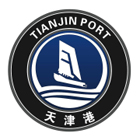
The Port of Tianjin is the largest port in Northern China and the main maritime gateway to Beijing. Port handled 453 million tons of cargo and 11.5 million TEUs in 2011, making it the world’s fourth largest port by throughput tonnage. The port handles freight from 180 countries on an annual basis. Growth in shipping is expected to continue to grow at this crucial transfer point.
However, utilization of the rail lines that connect the port to inland producers is highly underutilized. This is especially salient as 70% of the total exporting cargo volume at the Tianjin Port comes from provinces and regions outside Tianjin. The port serves a vast economic region covering over 50% of the land area in China, including: Beijing, Tianjin, Hebei, Henan, Shanxi, Shaanxi, Ningxia, Gansu, Qinghai, Tibet and Xinjiang. To expand its intermodal transport capacity and expand its presence in inland regions, the port is in the process of creating dedicated container train lines, dry ports and direct partnerships. Part of this process includes the completion the Tianjin Xingang North Rail Container Central Station, expected to be operational by the end of 2013.
This additional equipment on the port site is designed to ease the transfer of containers to trains which will serve these inland facilities currently being built. All of this investment in new facilities is primarily aimed at reducing the amount of throughput cargo delivered to the port via truck. Currently, a majority of containers reaching Tianjin Port are transported by truck, creating a significant amount of road congestion in areas leading to the port. If a substantial portion of the port’s throughput was shifted to rail, congestion and pollution could be greatly reduced. This study suggests that emissions reductions of up to 73% could be achieved for freight shipping from long distances (>100 miles), and even greater savings from shifting truck containers to barges (84%). This represents a potential reduction over 5,000,000 lbs. of CO2 each year.
